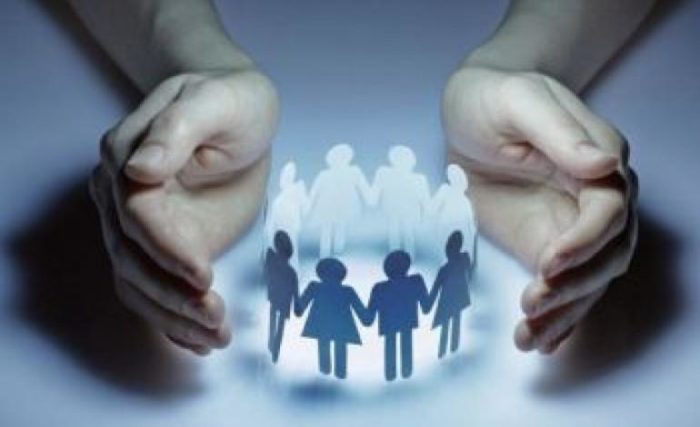Organizational Behavior and Management Control There is a close relationship between organizational behavior and management control system. A management control system seek to evaluate and regulate the performance of responsibility centers. The manager in charge of a responsible center is rewarded for good performance. At the same time when the performance of a responsibility center is dismal, the manager in charge is punished. Thus, a management control system acts as a double-edged sword. That is why manager are afraid of a control system and, may resist it. In order to make a control system successful, it is necessary to understand the factors that motivate, managers to achieve the results. Behavioral sciences have given several concepts that are relevant to management control. Some of these concepts at described below. 1. Perception. Whether a management control system is accepted and implemented successfully does not depend on the system. It depends largely on Continue reading
Organizational Behavior
Adam, Hayes and Hopson Model of Transition
We experience change on a daily basis as our environment is continually changing, more so than ever before in this digital and rapidly advancing technological age, but change is not the same as transition. A transition in the context of this article is an internal (psychological) change within a person or persons. Change happens to people and transition is an internal process. Changes which people experience may or may not be accompanied by a transition depending on the level of change and how a person is affected by it. In the Adam, Hayes and Hopson model of transition a transition begins with a discontinuity in a person’s life which they are aware of and can be the end of a job, relationship, loss of a loved one, loss of identity, loss of a current mode of being and so on. A person has to adapt to a new environment, situation Continue reading
Relationship between Organization Climate and Organizational Behavior Models
Autocratic Model: The autocratic model of organizational behavior creates a climate in which the feelings of the workers are suppressed and they have to just be obedient and tolerative with the autocratic behavior of the employer. The personal relationship between the employer and the employee is not up to the mark. The labor turnover will be considerable when there is high dissatisfaction of the employees with their boss since they have no other alternative except to leave the job. In case of bottleneck in production or marketing, the employees simply keep mum and they never come out with suggestions for solving the problem. When the worker leaves his Job, he will burst out with his boss with thick words coming from his soul and he will never have an idea to re-enter the service. As far as autocratic model is concerned the workers sustain a tight organizational climate and they Continue reading
Organizational Behavior – Definition and Concepts
Definitions of Organizational Behavior According to Keith Davis “organizational behavior is the study and application of knowledge about how people act within organizations. It is human tool for the human benefit. It applies broadly to behavior of people in all type of organization such as business, government, schools, etc. it helps people, structure, technology, and the external environment blend together in to an effective operative system”. Stephen Robins defines organizational behavior as a “field of study that investigates the impact that individuals, groups, and structure have an organization for the purpose of applying such knowledge improving an organization’s effectiveness“. There are many definitions about organizational behavior; every definition must include three important features, (1) organizational behavior is the study of human behavior, (2) study about behavior in organisations and (3) knowledge about human behavior would be useful in improving an organisation’s effectiveness. organizational behavior is the study of what an Continue reading
Greiner’s Model of Organizational Growth – Phases of Organizational Growth and Crisis
All organizations pass through various stages of growth and at each stage the organization is required to solve some specific problems. A very useful model of organizational growth has been developed by Larry E. Greiner. In his 1998 Harvard Business Review article entitled “Evolution and Revolution as Organizations Grow,” Greiner outlined five phases of growth punctuated by what he termed “revolutions” that shook up the status quo and ushered in the successive stage. Greiner’s Model of organizational growth is based on certain assumptions about the organization which are as under: First assumption is organisations are rigid, bureaucratic, control-centric, and centralized entities. Second, organisations fail to see that the future success of an organisation lie within their own organisation, and also fail to assess their evolving states of development. Therefore inability of a management to understand its organisation development problems can result in organisation becoming frozen in its present stage of Continue reading
Crisis in Organizations: Stages and Types
Companies face problems all the time, and solve them one way or another. Sometimes one of these problems is difficult-at least at the time it occurs-and it becomes public interest with the help of the press. This problem is then known as a Crisis, where the company is faced with legal, political, financial and governmental impact on its business. The most serious property of crises is the element of surprise. The worst part in their handling is being unprepared. Crisis can come from nowhere at any time; natural disasters, human error, and industrial accidents can all cause crisis. Sometimes the cause of a crisis is management itself; managers may insist that they face no crisis, and they fall into the brink of lying and rejection of its existence. Then, when the time of the deadline comes their answer to why the job is not finished will be: “We faced trouble Continue reading


